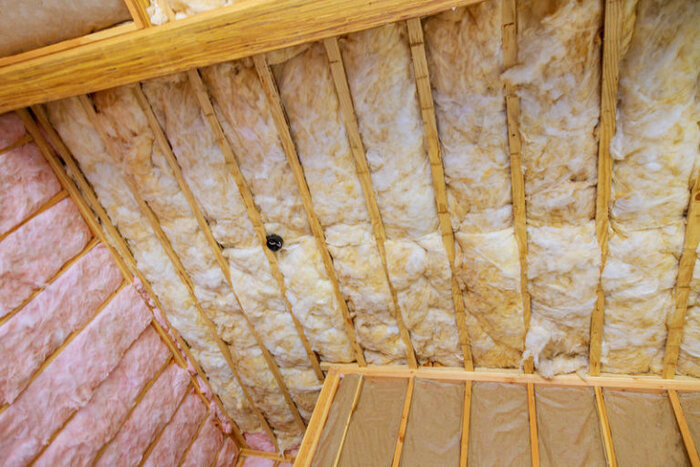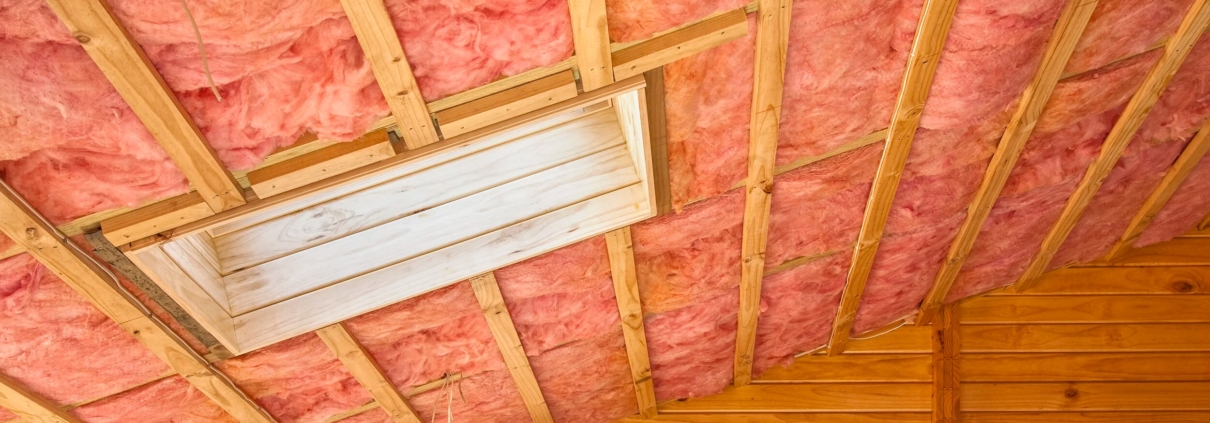How Insulation Shapes Comfort in Every Season
A home’s comfort level is often taken for granted until it disappears. We expect our homes to be a refuge from the weather, but that sense of sanctuary is largely determined by an invisible hero: the insulation.
Insulation is the primary barrier that shapes a home’s comfort in every season. In the winter, it works to keep the warmth generated by the furnace inside the house. In the summer, it does the opposite but equally important job of keeping the oppressive outdoor heat from getting in. A well-insulated home is one that maintains a stable, comfortable indoor temperature year-round, regardless of what the weather is doing outside.
This ability to control the transfer of heat is the key to seasonal comfort, and it relies on a complete and continuous thermal barrier. This guide, drawing from the principles of building science and the experience of professional insulation installers, will explain how insulation works to keep a home comfortable through the freezing temperatures of winter and the blistering heat of summer.
Winter Comfort Keeping the Heat In
In the winter, a home’s comfort is all about retaining the heat that the furnace or heating system produces. Heat naturally wants to move from a warm space to a cold space. This means that all the warm air inside a home is constantly trying to escape to the cold outdoors. The job of the insulation is to slow this process down as much as possible.
This is where the R-value of the insulation comes in. R-value is a measure of a material’s resistance to heat flow. The higher the R-value, the better the insulation is at trapping heat. A home with a high R-value in its attic and walls will stay warmer for much longer, which has several key benefits for comfort:
- Fewer Drafts and Cold Spots: A continuous layer of insulation helps to eliminate the chilly drafts that are often felt near windows, outlets, and exterior walls.
- Warmer Floors: In homes with a crawl space or basement, proper insulation on the foundation walls prevents the cold from seeping up through the floor, making the entire living space feel warmer.
- A More Stable Temperature: The home’s temperature will be much more even and consistent from room to room, without the dramatic swings that happen in a poorly insulated house.
A well-insulated home doesn’t just feel warmer; it provides a more stable and pleasant indoor environment throughout the entire winter season.
In a cold climate like Kentucky’s, for example, a major source of winter discomfort is the “stack effect,” where cold air is pulled in through the lower levels of the house. A professional insulation and air sealing job in the crawl space or basement is one of the most effective ways to stop this process and improve winter comfort.

Summer Comfort Keeping the Heat Out
In the summer, the role of insulation completely reverses. Now, the goal is to stop the intense heat from the sun and the hot outdoor air from getting into the cool, air-conditioned living space. For many homeowners, this is an even bigger challenge than keeping the house warm in the winter. The principles, however, are the same.
The insulation’s high R-value works to resist the flow of heat from the outside in. The most critical area for this is the attic. On a hot summer day, the temperature in an uninsulated attic can soar to 150°F or more. This superheated air then radiates down through the ceiling, turning the rooms below into an oven and forcing the air conditioner to run non-stop. A thick, continuous layer of insulation on the attic floor acts as a shield, dramatically slowing down this heat transfer.
Just as important as the R-value is the insulation’s ability to act as an air barrier. Air leakage is a two-way street. In the summer, it allows hot, humid outdoor air to infiltrate the home through thousands of tiny cracks and gaps. This not only raises the temperature but also increases the indoor humidity, which makes the air feel sticky and uncomfortable. An insulation system like spray foam, which creates a complete air seal, is extremely effective at stopping this infiltration and keeping the indoor environment cool and dry.
How Insulation Handles Each Season
| Season | The Primary Comfort Challenge | How a High-Performance Insulation System Helps |
|---|---|---|
| Winter | Keeping the heated air inside the house. | The high R-value slows the conduction of heat out of the house. The air seal stops drafts and cold air infiltration. |
| Summer | Keeping the hot, humid air outside the house. | The high R-value resists the flow of heat from the attic and walls. The air seal prevents hot, humid air from leaking in. |
| Spring & Fall | Maintaining a stable temperature during periods of large daily temperature swings. | The thermal barrier helps to moderate the indoor temperature, reducing the need for either heating or cooling. |
The Impact on Humidity and Air Quality
Comfort is not just about temperature; it’s also about the quality of the air inside the home. A well-insulated and air-sealed home provides a more comfortable environment by helping to control indoor humidity.
In the humid summer months, the air that leaks into a home brings a lot of moisture with it. This forces the air conditioner to work harder, as it has to both cool the air and remove this excess moisture. A home that is properly air-sealed with a good insulation system will have much lower indoor humidity levels, which makes the air feel more comfortable at a higher temperature. This can allow a homeowner to set their thermostat a few degrees higher and still feel perfectly comfortable.
In the winter, the opposite is true. A drafty house tends to be a dry house, as the heated indoor air escapes and is replaced by cold, dry outdoor air. An airtight home will retain a more stable and comfortable level of humidity throughout the heating season.
For homes with a damp crawl space, using closed-cell spray foam on the foundation walls is an excellent way to improve summer comfort. Because it is a vapor barrier, it stops moisture from the ground from being pulled up into the house, which can dramatically lower indoor humidity.

The Role of Professional Installation
The comfort-shaping benefits of insulation are only fully realized when the material is installed correctly. A professional installation is critical for ensuring that the thermal barrier is complete and continuous, without the gaps, voids, or compressed areas that undermine performance.
A professional contractor will:
- Perform a thorough assessment: They will identify the key areas of heat loss and air leakage in the home.
- Properly air seal: Before any insulation is installed, they will seal all the major air leaks in the attic and foundation.
- Install the material to the correct depth and density: They will ensure the home has the proper R-value to meet or exceed the local energy code recommendations.
This attention to detail is what separates a standard job from a high-performance one that delivers maximum comfort in every season.
Things to Consider for Your Home
While professional installation is the top priority, a homeowner should also keep a few other factors in mind to create a truly comfortable home.
- The “Whole-House” Approach: Comfort is created by a system. For the best results, a homeowner should think about the entire “building envelope,” which includes the attic, the walls, and the foundation.
- The Importance of Ventilation: A very airtight home needs a good ventilation system to ensure a steady supply of fresh, healthy air.
- The Quality of the Windows and Doors: Even a well-insulated house can feel uncomfortable if it has old, leaky windows and doors. These are often the next logical upgrade after the insulation has been addressed.
- The Climate Zone: The amount of insulation a home needs is dependent on the local climate. A professional contractor will be familiar with the specific recommendations for the area.
Questions People Ask About
What is the most important area of my house to insulate for comfort?
For a climate with both hot summers and cold winters, the attic is almost always the most important and cost-effective area to insulate. It is the largest single surface area of the house and is the primary source of both heat gain in the summer and heat loss in the winter.
Will new insulation really get rid of the drafts in my house?
Yes, but only if it is paired with a thorough air sealing job. Insulation by itself does not stop air movement. A professional installation will always include the critical step of sealing up all the hidden air leaks before the insulation is installed. This combination is what gets rid of drafts for good.
Can insulation make my house too hot in the summer?
No, this is a common misconception. Insulation does not create heat; it only slows the movement of heat. In the summer, it works to keep the heat from the sun out of your house, which is exactly what you want.
My house has two stories, and the upstairs is always much hotter in the summer. Can insulation fix this?
Yes. This is a classic symptom of a poorly insulated and ventilated attic. The superheated air in the attic is radiating heat down through the second-floor ceiling. A professional attic insulation upgrade is one of the most effective ways to solve this common comfort problem.
Does the type of insulation I choose make a difference in comfort?
Yes. While all insulation will improve comfort if installed correctly, some materials, like spray foam, are inherently better at creating a complete air seal. This can provide a superior level of comfort by completely eliminating air leakage.
A Year-Round Investment in Your Quality of Life
Insulation is a fundamental component that shapes the daily experience of living in a home. By creating a robust barrier against the elements, a high-performance insulation system provides a stable, quiet, and comfortable environment in every season. It is a home improvement that pays dividends not just in lower energy bills, but in an improved quality of life for the people who live there.
Get a Professional Comfort Assessment for Your Home
To understand how a professional insulation upgrade could improve the seasonal comfort of your specific home, the best first step is a comprehensive evaluation. An experienced insulation contractor can identify the key areas of weakness in a home’s thermal envelope and recommend the most effective solutions. For homeowners in the Mayfield area, a team like Armored Insulation can provide a detailed comfort and energy assessment. To schedule a consultation, they can be reached by email at info@armored-insulation.com or by phone at (270) 727-5566.
Author: Jared Baker, Owner and Director of Business at Armored Insulation, is a Mayfield native with deep local insight and strong business expertise. He plays a key role in upholding the company’s focus on delivering top-tier service.
Reviewer: Mia Clark used her 9 years of experience in spray foam to review this article and offered input focused on helping companies make their services easier to understand and market effectively.



Leave a Reply
Want to join the discussion?Feel free to contribute!